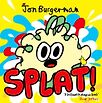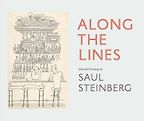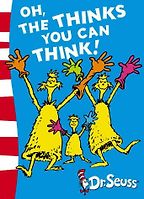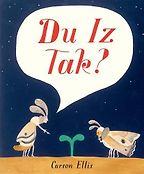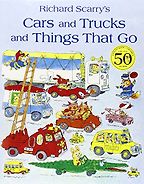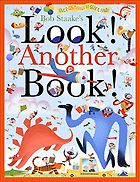My children and I have thoroughly enjoyed reading Splat! as our bedtime story over the last couple of weeks. The colours are so superbly vibrant they seem add to the excitement of the increasing (and increasingly funny) ‘splats’ and the comic timing is spot on – yet it seems quite natural and effortlessly funny. Did you giggle when you were creating it?
Thanks. Yes, I smirked all the way to the end, hoping kids would find it funny too. I had the idea and quickly scribbled it down into a note book whilst sat on my sofa. Once you have an idea the rest can follow very quickly. I probably jotted down the whole book in that one short sitting.
I’m glad you like the colours. I wanted to make a picture book that was as bright as could be. I feel bold colours transfer their energy to the book and then hopefully the reader, and I wanted Splat! to be as zingy as possible!
We are looking at your book choices; you wanted to talk about books that encourage sense of playfulness in their readers. What was it (or is it) in your life that makes these books stand out for you?
These books stand out for me, as well as many other playful books I enjoy, because I think I’ve always been looking to play. Throughout my upbringing, my education and my grown up ‘professional’ life I’ve been trying to duck out of working. I just want to play. Anything can become a game, a challenge, an experiment and ultimately a distraction from what one might have been tasked with doing.
“If a book takes more than a week to make then something isn’t right”
I don’t know specifically why that might be. Maybe I don’t like following instructions, or lack some sort of focus. Perhaps it’s that play is a lot of fun and on the surface it is immediately more appealing that something labelled as work? Or maybe it is because it feels as if there’s a lot more possibilities within play. There’s no defined goal or destination, we’re just seeing what will happen. I like improvisation a lot for that reason too. The anticipation of discovering something new (to oneself) is a big part of what I find alluring in the act of play.
I think these books each have a spark of that element.
I’ve done a little research into the value of being playful for children—why it is so good for them to be encouraged in this way through books—as well as Playdough and Lego etc, which are the more physical tools of play.
Whatever your age, play is where we test ideas out, define rules and then see if they hold. Something I love about playing is that it can safeguard against the fear of failure. We’re all terrified to fail, sometimes so much so that it inhibits participation. But if we were only playing, then the failure isn’t so bad. The failure is merely a part of the overall experiment and is rolled back into the mix. Often the failure, when cocooned by the all the other actions of play, can be re-framed as innovation.
Play is utterly essential. There was a wonderful exhibition recently at the Foundling Museum in London called ‘Child’s Play’ by the photographer Mark Neville. I was fortunate enough to visit a few weeks ago when Mark was giving a tour of his work in the gallery. The project seeks to uphold the right for all children to be able to play, particularly in deprived or war torn parts of the world. What was particularly fascinating, was that children, even when trapped in terrible situations, still have an agency for free, open, joyful and spontaneous play. It was suggested that play, for children in harsh environments, is an important part of a coping strategy, offering them safety, distraction and a sense of power. I’d not really considered child’s play in that way before.
I’ve done a little research into the history of ‘playing’ and ‘amusements’ – specifically in the form of books. As visual playfulness is just as important as physical playfulness – both are equally important experiences.
I don’t know if you have read Wonderland by Steve Johnson? He is basically arguing that if you want to know where the future lies you need to look at where people are having the most fun today. Where they are playing.
No, I haven’t, but I’ve put a hold on it at my local library here in Brooklyn so I shall be reading it soon.
In the introduction (I’m paraphrasing here), he describes the work of three talented brothers, now known as the Banu Musa. They were active in Baghdad during the early years of the House of Wisdom—the great library of Baghdad (760BC – 1258AD). The Banu Musa were commissioned to write a book describing classical engineering designs inherited from the Greeks. But their brief eventually extended to include their own designs.
The overwhelming majority of these books focus on objects of amusement: toys! So, it follows, that the ideas of advanced engineering first came about as playthings, illusions and magic. How important is a sense of ‘playfulness’ in your life and what is it about your book choices that reflects this?
I feel that creative play is the medium I work in. Previously, I would have said that I was a ‘drawer’ or, somewhat a little self-deprecatingly, a ‘doodler’, and that ink on paper was my primary medium of expression. Now I do not think in such a limited way. I don’t think it matters what materials I use, it’s more about how the ideas are expressed. I can allow myself to use anything at my disposal to create with.
“If we were only playing, then the failure isn’t so bad. The failure is merely a part of the overall experiment and is rolled back into the mix”
Before it may have just been paint and ink on a surface but in the last six or so years I’ve made works with sound, song, performance, animation, film, photography, textiles and a host of digital toys. I’m actually no good at making works in any other way than just playing around. My wife is suspiciously keen to point out anything I’ve made that appears to have been ‘worked on’ as not being my best. I’ve found that even rings true with the books I’ve made, so far. Herve Tullet (a true master of play) said to me, and I think I agree, that if a book takes more than a week to make then something isn’t right.
Let’s talk about your first book. Along the Lines: Selected Drawings of Saul Steinberg by Chris Ware and Mark Pascale
My first choice is not just a children’s book but it’s wordless and wonderful, full of playful drawings and inked ideas. Looking at it just makes me want to draw.
“I really like that it’s a book about how you can make up anything you like, it all starts with employing your imagination and going wherever you like”
In this book I think the parameters of the game are lines and how they might be shaped. Each drawing is a witty performance, exhibiting how magically he can will the line into doing what he wants. There’s barely anything other than black lines on the page, yet the variety of works is so impressive. Sometimes the drawings are rough and crude, other times they’re as sharp and beautiful as a Picasso etching. Most importantly, of course, is that they’re all pretty funny.
Next you’ve chosen Oh The Thinks You Can Think! by Dr. Seuss.
This book is saturated with the delirious sense of infectious nonsense that is prevalent in all my favourite Dr Seuss books. I really like that it’s a book about how you can make up anything you like, it all starts with employing your imagination and going wherever you like. Slyly, I also revel in the fact that it’s without any sort of narrative arc, it’s just a bunch of crazy spreads. How can I get away with that?
“Whatever your age, play is where we test ideas out, define rules and then see if they hold”
You almost get a sense of the book being written as you’re reading it. At its heart it’s playing with words and how you can mush language to fit through any rhyming hole you like, whilst the fantastical illustrations jumble things up too, such as with the black water and white sky.
Du Iz Tak?
by Carson Ellis.
I love this book, perhaps my favourite picture book of last year. Aside from the utterly charming artwork and attention to detail throughout, I love the playfulness with the invented language. I really like how it’s possible to decipher the text as you read it out loud. It’s super clever and fun, the best kind of play!
“You can read through the books but you can also just noodle across the spreads and make up your own narratives”
Du Iz Tak is so playful with language. Since starting to create my own books I’ve become aware of all the issues that arise when you consider foreign rights and translations. No-one told me you could just mess about with words in the same way you can with the artwork. The fact that Carson Ellis has coupled it with a delightful story, that’s both sweet and sad, with beautiful artwork to match is a total triumph.
Look! Another Book!
by Bob Staake
This is a bright and funny search and find book, aided with die-cuts to reveal a few choice items from each spread. It rhymes, it’s colourful, it’s about looking and it uses the format of a book as a platform for play.
Finally: Cars and Truck and Things that Go by Richard Scarry
I could pretty much pick any Scarry book, they’re all delightful (especially now with their updated gender and ethnic stereotypes).
What I love about his books is the generosity of it all. There’s something to see and enjoy corner to corner. The infectious playfulness is spread all over the page and then continues in our head.
Look! Another Book! has some Seuss-y playfulness in it, mixed with some Scarry style busy spreads full of incidental details. This along with Cars and Trucks and Things that Go by Richard Scarry invites the reader to play within their printed worlds. You can read through the books but you can also just noodle across the spreads and make up your own narratives. I love it when the ‘thing’ is actually an invitation to the reader/player’s imagination to take the lead and go on their own adventures.
Interview by Zoe Greaves
May 17, 2017. Updated: April 27, 2023
Five Books aims to keep its book recommendations and interviews up to date. If you are the interviewee and would like to update your choice of books (or even just what you say about them) please email us at [email protected]
Five Books interviews are expensive to produce. If you've enjoyed this interview, please support us by donating a small amount.

